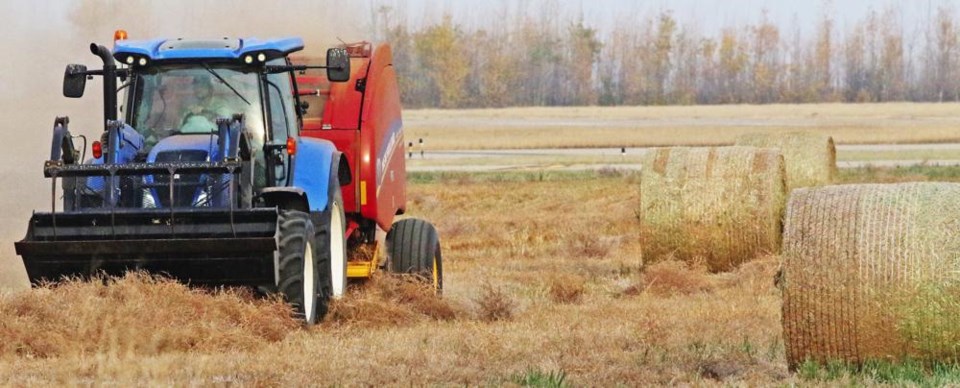WEYBURN RADVILLE-LAKE CROP DISTRICTS - The 2021 harvest is completely wrapped up in southeast Saskatchewan, with 100 per cent reported in the Weyburn and Radville-Lake Alma crop districts, and at 99 per cent province-wide.
Crop yields varied widely within the southeast region, depending on how much moisture was received throughout the growing season. Area crops also saw a large yield impact from heat stress, wind, hail and grasshoppers this summer.
Yields in the southeast are slightly higher than other regions due to some decent, timely rains throughout the season. Crop quality was good overall, with the majority of crops falling within the top two grades due to limited fall moisture during harvest and limited disease issues.
The estimated crop yields broken down by crop are as follows in the southeast region.
For winter wheat, the average yield is 31 bushels per acre; fall rye, 26 bu/ac; hard red spring wheat, 34 bu/ac; durum, 33 bu/ac; other wheat, 36 bu/ac; oats, 63 bu/ac; barley, 50 bu/ac; flax, 20 bu/ac; canola, 27 bu/ac; soybeans, 28 bu/ac; peas, 34 bu/ac.
For canaryseed, the average yield was 1,101 pounds per acre; mustard, 820 lbs/ac; lentils, 1,246 lbs/ac; and chickpeas, 1,383 lbs/ac.
Average hay yields on dry land are reported as, alfalfa, 1.2 tons per acre; alfalfa-brome, 1.0 tons/ac; other tame hay, 0.93 tons/ac; wild hay, 0.66 tons/ac; and greenfeed, 1.92 tons/ac.
At this time, most livestock producers have indicated they will most likely have adequate hay, straw, greenfeed and feed grain heading into the winter, although producers in drier areas have reported many will not have adequate winter feed supplies and shortages will be likely.
Some producers have reduced the size of their herds in order to stretch their feed supplies longer throughout the winter.
Along with affecting hay and feed yields, the dry conditions this year have resulted in shortages or potential shortages of water supplies for livestock as well. Producers have had to haul water to their cattle all season long due to quantity and quality issues, and going into winter, there are concerns about sourcing water for livestock.
Moisture conditions continue to be a major concern for producers. Even with several rainfalls during the season, the constant strong winds and extreme heat in July left the topsoil moisture conditions very depleted in most of the southeast.
Farmland will need significant amounts of moisture before next spring to replenish topsoil and subsoil moisture conditions for the next growing season.
Heading into winter, cropland topsoil moisture is rated as 21 per cent adequate, 54 per cent short and 25 per cent very short. Hay and pasture land topsoil moisture is rated as 12 per cent adequate, 36 per cent short and 52 per cent very short.
In the final rainfall summary for 2021, the following are the rainfall totals for the RMs in the Weyburn region.
In the RM of Weyburn, there was 269 mm, with May recording the most rainfall at 84 mm, and 62 mm in August. In the RM of Brokenshell, there was 345 mm over the summer, with 107 mm recorded in August. In the RM of Wellington, a total of 308 mm of rainfall was recorded, with 93 mm in May.
In the RM of Francis, the total ranged from 194 to 370 mm over the year. The RM of Tecumseh recorded 238 mm in total, and in the RM of Laurier, the totals ranged from 284 to 397 mm.
Crop reporters have indicated that acres seeded to winter wheat and fall rye are below average this fall due to the dry condition. Acres are estimated to fall somewhere between 20 to 25 per cent. There were concerns that crops would not germinate and establish properly due to the dry conditions.
Producers are busy cleaning up fields, hauling grain and bales, working low spots, applying fertilizer and herbicides, picking rocks and preparing cattle for winter.



